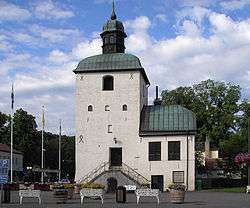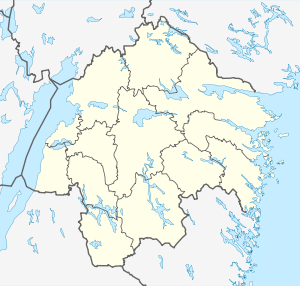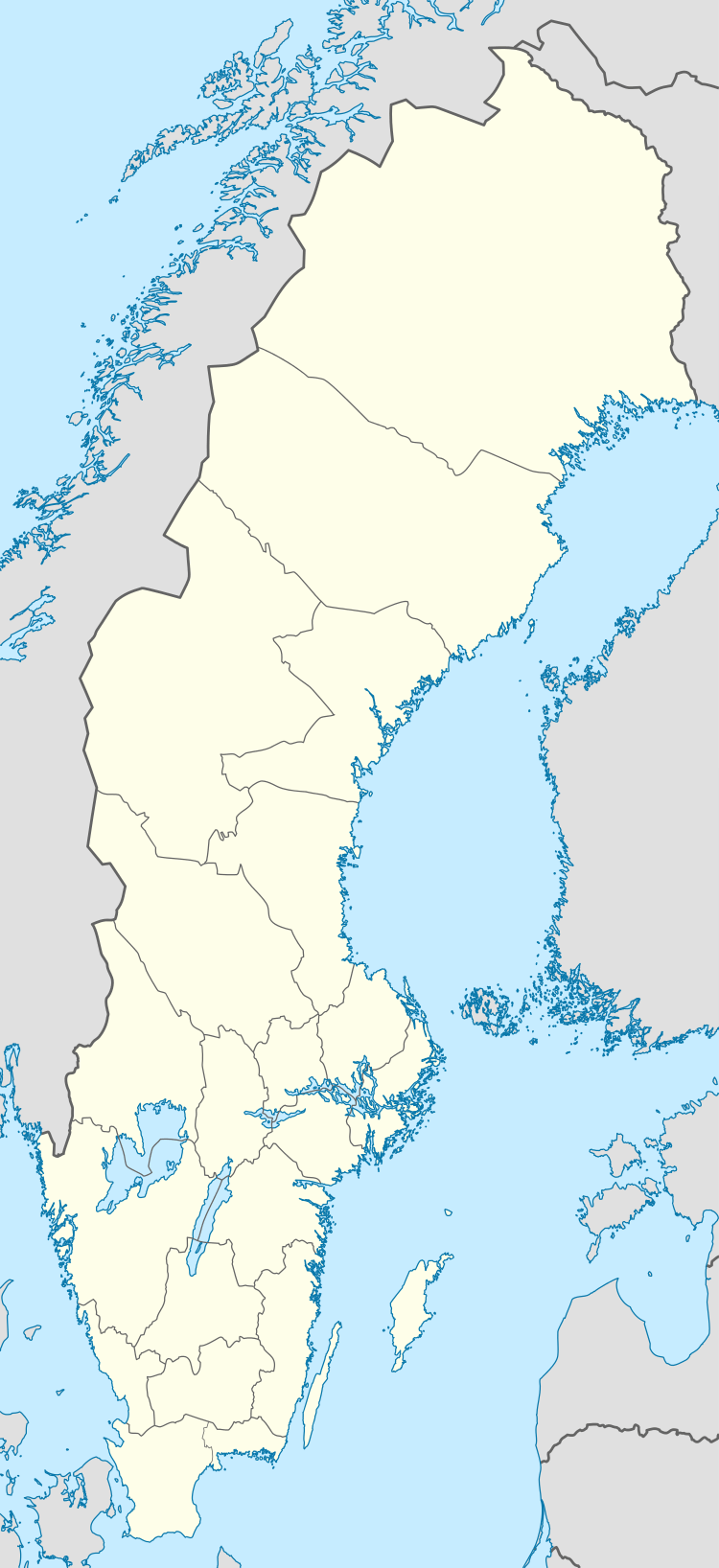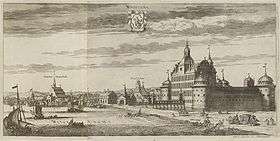Vadstena
Vadstena (Swedish pronunciation: [ˈvâsːˌteːna] (![]()
Vadstena | |
|---|---|
 Vadstena Town Hall is the oldest in Sweden | |
 Vadstena  Vadstena | |
| Coordinates: 58°27′N 14°54′E | |
| Country | Sweden |
| Province | Östergötland |
| County | Östergötland County |
| Municipality | Vadstena Municipality |
| Area | |
| • Total | 3.41 km2 (1.32 sq mi) |
| Population (31 December 2010)[1] | |
| • Total | 5,613 |
| • Density | 1,645/km2 (4,260/sq mi) |
| Time zone | UTC+1 (CET) |
| • Summer (DST) | UTC+2 (CEST) |
Despite its small population, Vadstena is, for historical reasons, still referred to as a city: though it received its city privileges in 1400), Statistics Sweden only counts as cities Swedish urban localities with more than 10,000 inhabitants.
History
Above all, the city of Vadstena is noted for two important facts of Swedish history. It was in Vadstena, year 1350, that Saint Bridget of Sweden founded the first monastery of her Bridgettine Order, and Vadstena Castle is one of Sweden’s best-preserved castles from the era of Gustav Vasa in the 16th century, when Sweden became Protestant. Today the surviving buildings of the monastery are occupied by a hotel, (Vadstena Klosterhotel), and the castle houses the provincial archives and a museum of 16th and 17th century furniture, portraits and paintings.
Since the 16th century, Vadstena has been the location of a hospital. Earlier in history, it mainly housed mental patients. Today, some of the oldest buildings present the Vadstena Hospital Museum.

The buildings in the city centre date mainly from the 16th, 17th and 18th centuries. The old town is well preserved and the streets have not changed much over the centuries. The Town Hall is Sweden's oldest, dating back to the early 15th century. Notable is the main street (Storgatan) where all the shops are gathered, as they would have been during the Middle Ages.
Railway
Vadstena also preserves elements of more recent history in the museum of the Vadstena-Fågelsta narrow gauge railway (Wadstena Fogelsta Järnväg).[2] This 891 mm (or Swedish three foot) railway was once part of a large network of narrow-gauge railways in Östergötland constructed in the latter part of the 19th century.
Gallery
- Vadstena station
- Vadstena Abbey Church
- Vadstena Castle
References
| Wikimedia Commons has media related to Vadstena. |
| Wikivoyage has a travel guide for Vadstena. |
- "Tätorternas landareal, folkmängd och invånare per km2 2005 och 2010" (in Swedish). Statistics Sweden. 14 December 2011. Archived from the original on 10 January 2012. Retrieved 10 January 2012.
- The railway museum in Vadstena Wadstena Fogelsta Järnväg. Retrieved 24 September 2014.